The article below by the late Mary Boyce on the ancient Ādur-Gushnasp Fire-Temple in Iran’s Azarbaijan province was originally posted in the Encyclopedia Iranica on December 15, 1983 and last updated on July 22, 2011.
Kindly note that a number of pictures displayed in the article below are from Kaveh Farrokh’s lectures at the University of British Columbia’s Continuing Studies Division , Stanford University’s WAIS 2006 Critical World Problems Conference Presentations on July 30-31, 2006; Farrokh’s textbook Shadows in the Desert: Ancient Persia at War-Персы: Армия великих царей-سایههای صحرا-) as well as venues such as the Civilization Fanatics Center and Ancientbattles.com.
Ādur-Gushnasp is an Ātash Bahrām, that is, a Zoroastrian sacred fire of the highest grade, held to be one of the three great fires of ancient Iran, existing since creation. Note that Bahram is the the God of War and Victory.
=====================================
ĀDUR GUŠNASP, an Ātaš (Atash) Bahrām (see Ātaš in Encyclopedia Iranica), that is, a Zoroastrian sacred fire of the highest grade, held to be one of the three great fires of ancient Iran, existing since creation (see further in Encyclopedia Iranica under Ādur Burzēn-Mihr). The name Gušnasp, presumed to be that of the fire’s unknown founder, means “Stallion.” The fire was installed somewhere in Media at an unknown date, presumably in the late Achaemenid or Parthian period.
It was probably in early Sasanian times that the fire was first classified by Persian scholastics as that of the warrior estate, to which the kings themselves belonged. The priests of Ādur Gušnasp seem to have skillfully promoted the royal connection thus created for their fire and to have enhanced is dignity by fashioning legends which linked its founding with the earliest days of Zoroastrian tradition. This they probably did partly in rivalry to Ādur Burzēn-Mihr, the fire of conquered Parthia. Thus in Bd. 18.12 it is related that Ādur Gušnasp, like the other great fires, used once to move freely about, giving its protection to the world; but when Kay Ḵosrow the Kayanian was “destroying the image-shrine of Lake Čēčast, it settled on the mane of his horse, dispelling darkness and shadow, and shedding light, until he had destroyed the image-shrine. In that same place, upon Mt. Asnavand, he established fire-altars. For this reason it is called “Gušnasp,” because it settled upon the mane of his horse (asp).” It is plainly impossible to extract any precise historical facts from this legend; but it certainly suggests that at some time, possibly in the late Parthian period, a powerful iconoclast had the images of yazatas destroyed in some great Median shrine, and that Ādur Gušnasp was installed triumphantly in their stead. There is no means of knowing whether it was before or after this that the Median priests annexed the whole of the early Zoroastrian tradition, from the pagan Kayanians down to the prophet himself, for their own province, transferring it thus from northeast to northwest Iran. So Lake Čēčast (Av. Čaēčasta) was identified with Lake Ormīa (Bd. 12.3) and Mt. Asnavand (Av. Asnavant) too was said to be in Azerbaijan (Bd. 9.29), while Ādur Gušnasp was declared to be: “…at the deep lake Čēčast of warm water which is opposed to the dēvs. Know that the Religion became manifest even there” (Zand ī Vahman Yašt, ed. B. T. Anklesaria, Bombay, 1957, 6.10). At whatever epoch these identifications were made, they can hardly have found acceptance outside western Iran during the overlordship of the Parthians, who were the natural guardians of the traditions of the northeast. It seems probable, therefore, that one should attribute to the Sasanian period—a time of western Iranian ascendancy—an extension of Ātaš nīāyeš 4 or possibly the creation of this whole section of the prayer. Its opening lines, with their invocation of “Fire, the son of Ahura Mazdā” and of Xvarənah, were understood by the Persian priests to be an invocation of their fire Ādur Farnbāg. There follows abruptly the invocation of Kavi Haosravah, the lake of Kavi Haosravah, Mt. Asnavant, and Lake Čaēčasta. The Medes and Persians, it is plain, almost never committed the sacrilege of adding anything new to the Avesta, so that to introduce the actual names of Ādur Farnbāg or Ādur Gušnasp into an Avestan prayer was impossible. Instead, it seems, these lines were put together from familiar Avestan elements, in such a way as to convey to all those conversant with their legends that these were invocations of the two great sacred fires. In the following section of the prayer a brief invocation of Mt. Raēvant is sufficient to include Ādur Burzēn-Mihr in a triple supplication. All this is made clear by glosses to the Pahlavi translation, in which each of the fires is explicitly named. Further, and still more audaciously, a commentator on Ātaš nīāyeš 4 adds that: “…it was this Ādur Gušnasp which lamented and cried for help before Ohrmazd.” Ādur Gušnasp appears to be thought of here as representing the totality of fires, which, like all else belonging to the invisible creation, must have been reluctant to be created again in the physical state and so be exposed to defilement and danger of extinction; and presumably Ādur Gušnasp was thus singled out because its name linked it with the creatures of Vahman, represented originally by the Uniquely-Created Bull, which wailed and complained before Ohrmazd (Y. 29). Of the actual history of Ādur Gušnasp more is known than of the other two great fires, for two reasons: First, its temple in Azerbaijan was not far from the western frontier of Iran and so attracted the notice of a number of foreign visitors. Second, the Sasanian kings accorded it favor from the early 5th century onward; as a result, it won frequent mention in the latter part of the royal chronicle (the Xwadāy-nāmag) and in the Šāh-nāma (where it is also called Āḏar Ābādagān). Where Ādur Gušnasp was first installed is uncertain; but some time before A.D. 400, it seems, it was transferred to a site in Azerbaijan of exceptional beauty and fittingness, known in Islamic times as Taḵt-e Solaymān, but presumably named by the Median priests Mt. Asnavand. This is a hill formed by mineral deposits from a spring which wells up within it, so that its flat top holds a lovely lake high above the level of the surrounding countryside. Here a new temple was built for Ādur Gušnasp; and the royal connection of the fire was so successfully fostered that it became the custom in the later Sasanian period for each king to make a pilgrimage there on foot after his coronation (though the accounts in the Šāh-nāma suggest that the monarch walked only from the base of the hill itself, in token of deep reverence). Royal gifts were lavished on the shrine; and the legend was naturally evolved that the first monarch to enrich it was Kay Ḵosrow himself, coming to pray there with his grandfather Kāvūs for help against Afrāsīāb (see Šāh-nāma, ed. Borūḵīm, V, p. 1386.2228-37). There are several references in the epic to visits to the fire by Bahrām V (A.D. 421-39), who is said to have spent the feasts of Nowrūz and Sada there (Šāh-nāma, ed. Borūḵīm, VII, p. 2205.1599-1602) and, on another occasion, to have entrusted to its high priest an Indian princess, his bride, to be converted to the faith (ibid., VII, pp. 2249-50.2385-91). Ṯaʿālebī (Ḡorar, pp. 559-60) relates how, when Bahrām returned from his campaign against the Turks, he bestowed the ḵāqān’s crown on the shrine and gave his wife and her slaves to it as servitors. Subsequently Ḵosrow Anōšīravān is said to have visited Āḏar Gošnasp before setting out on a campaign (Šāh-nāma, ed. Borūḵīm, VIII, p. 2339.500-09), and later he bestowed on the fire-temple a vast amount of treasure out of tribute received from Byzantium (ibid., VIII, p. 2446.2379-86). His namesake Ḵosrow Parvēz also prayed at Āḏar Gošnasp for success in battle (ibid., IX, p. 2768.1634-41 ) and later gave a rich share of spoils to the sanctuary (ibid., IX, p. 2797.2160-67). Nor, plainly, was it only kings who made their petitions and offerings there, for in the Ṣaddar Bondaheš 44, which is concerned with: “praying for one’s wants,” it is prescribed that when praying for the restoration of eyesight, one should vow “I shall make an eye of gold and send it to Āḏar Gošasp” (44.18; ed. D. N. Dhabhar, Bombay, 1909); or, if one wishes a child to be intelligent and wise, “I shall send a present to Āḏar Gošasp” (par. 21). It is in keeping with the literary records that the ruins of Ādur Gušnasp should be the most impressive to survive of any Zoroastrian place of worship. To make the sanctuary inviolable the whole hilltop was enclosed by an enormously thick wall of mud-brick; and later (probably towards the end of the Sasanian period) another stone wall was built along the very rim of the hill, 50 feet high and 10 feet thick, with thirty-eight towers strung out along it, each within bowshot of the next. [Click to Enlarge] The ancient Gahanbar ceremony at the Azargoshasb Fire Temple – Zoroastrian Mobads Sohrab Hengami and Mehrab Vahidi are engaged in the recitation of the Holy Avesta (Photo Source: Sima Mehrazar). The temple precinct itself was enclosed on three sides by yet another wall, being open on the south side to the lake; and excavation has revealed much of the groundplan of the great complex. The approach from the north brought one into a large courtyard, fit for the reception of many pilgrims; and from this a processional way led toward the lake. This included a square, domed room open to north and south, which was richly appointed, and may possibly have been used for prayer and ceremonial ablutions. It ended in a large open portico looking out over the waters. A covered way then led along the front of the building to an impressive series of pillared halls and antechambers, running south to north on the west side of the processional way; and at the northernmost end of these, it seems, was the sanctuary of Ādur Gušnasp itself, at first a flat-roofed, pillared structure of mud-brick, which was later replaced by a stone one with a domed roof. The walls of this sanctuary were adorned with a stucco frieze in high relief; and beneath the dome was found the three-stepped pedestal of a great fire-altar, and the base of its rounded, pillar-like shaft. Fragments of lesser altars and of ritual vessels have been unearthed in and near the pillared halls which led to the sanctuary, in which there was doubtless a constant activity of devotion, with offerings, prayers, and religious ceremonies. The great temple complex held numerous other rooms, including lesser shrines and the temple treasury, which must have housed many priceless gifts. No clearly datable objects have been found in the ruins earlier than the reign of Pērōz (A.D. 457-84); but a room by the main entrance yielded a store of over 200 clay sealings, among which were eighteen that bore the words: “…high-priest of the house of the fire of Gušnasp” (mowbed ī xānag ī Ādur ī Gušnasp). In A.D. 623 the Byzantine emperor Heraclius, during his wars against Ḵosrow Parvēz, sacked the temple of Ādur Gušnasp, casting down its altars, setting fire to the building; and slaying every living creature there. The great fire itself was evidently carried off to safety, however, and later reinstalled. There may well be a memory of the destruction of Ādur Gušnasp’s shrine in the pseudo-prophecy contained in the Persian Zand ī Vahman Yašt (see Dhabhar, Rivayats, pp. 467, 469): “They will remove Ādur Gušasp from its place . . . on account of (the devastation of) these armies, Ādur Gušasp will be carried to Padašxwārgar.” Once enthroned again in its temple on the hill, Ādur Gušnasp continued to burn there for many generations after the coming of Islam; but harassment grew, and the great fire had probably been extinguished by the end of the 10th or, at the latest, the early 11th century A.D. The ruins of its temple were subsequently quarried to build a palace on the hilltop for a local Muslim ruler. Bibliography See the bibliog. for Ādur Burzēn-Mihr. Add: M. N. Dhalla, The Nyaishes or Zoroastrian Litanies, New York, 1908. The Persian version of Zand ī Vahman Yašt, ed. M. R. Unvala, Darab Hormazyar’s Rivayat II, Bombay, 1922, pp. 407-21; tr. B. N. Dhabhar The Persian Rivayats of Hormazyar Framarz and Others, Bombay, 1932, pp. 457-81. For classical and Arabic references to Ādur Gušnasp, and the bibliog. of the excavations there up to 1969, see: K. Schippmann, Die iranischen Feuerheiligtümer, Berlin and New York, 1971, pp. 309-57. R. Naumann and D. Huff, “Takht-i Suleiman,” Bastan Chenassi va Honar-e Iran 9-10, December, 1972, pp. 7-25. R. Schneider, “Takht-i Suleiman, Bericht über die Ausgrabung 1965-1975,” Artibus Asiae 1975, pp. 109-204. M. Boyce, “Iconoclasm among the Zoroastrians,” Studies for Morton Smith at Sixty, ed. J. Neusner, Part IV, Leiden, 1975, pp. 93-111. D. Huff, “Recherches archéologiques à Takht-i Suleiman,” Comptes rendus de l’Académie des Inscriptions et Belles-Lettres 1978, pp. 774-89.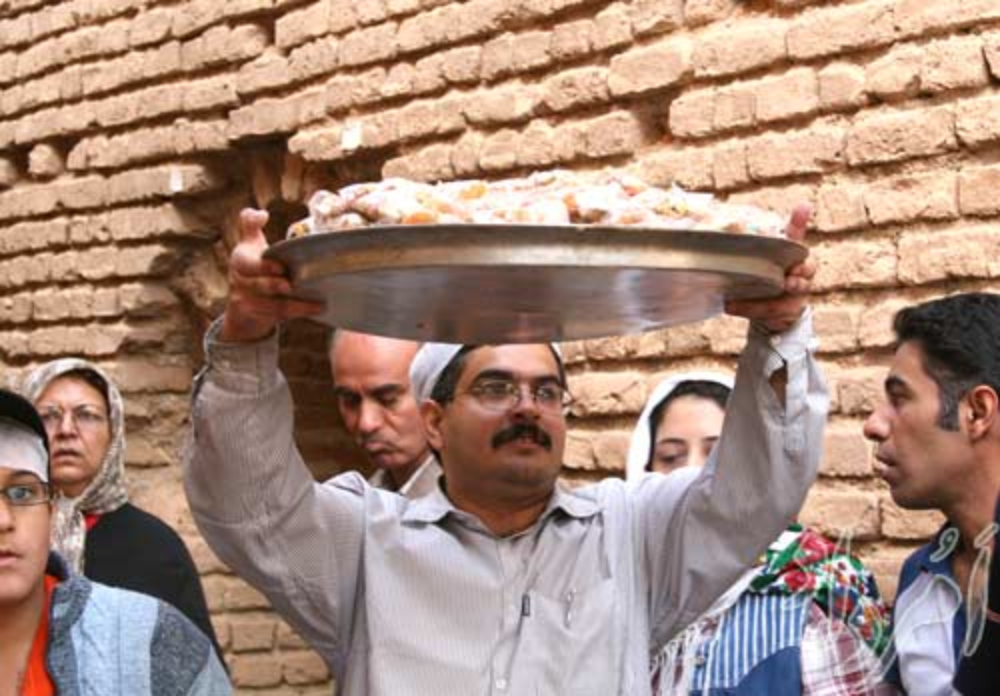
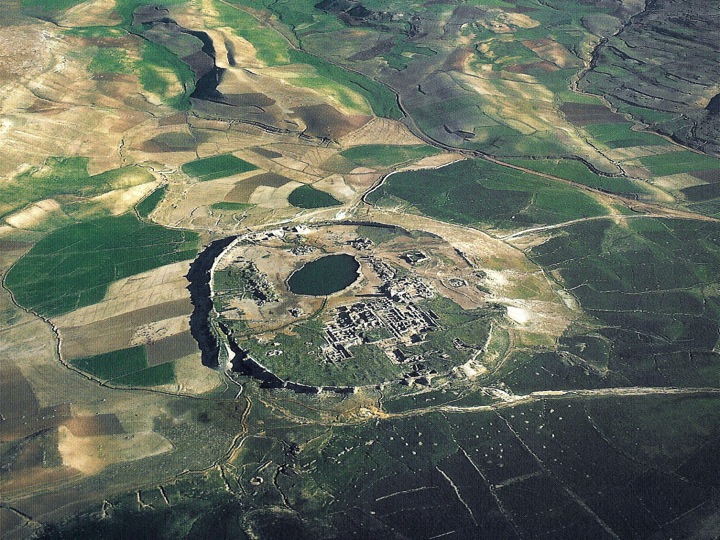 An excellent overview of the site of the site of Ādur-Gushnasp or Shiz (modern-day Takhte Suleiman) (Picture Source: Iran Atlas). The Ādur-Gushnasp sacred fire was dedicated to the Arteshtaran (Elite warriors) of the Sassanian Spah (Modern Persian: Sepah = Army).
An excellent overview of the site of the site of Ādur-Gushnasp or Shiz (modern-day Takhte Suleiman) (Picture Source: Iran Atlas). The Ādur-Gushnasp sacred fire was dedicated to the Arteshtaran (Elite warriors) of the Sassanian Spah (Modern Persian: Sepah = Army).
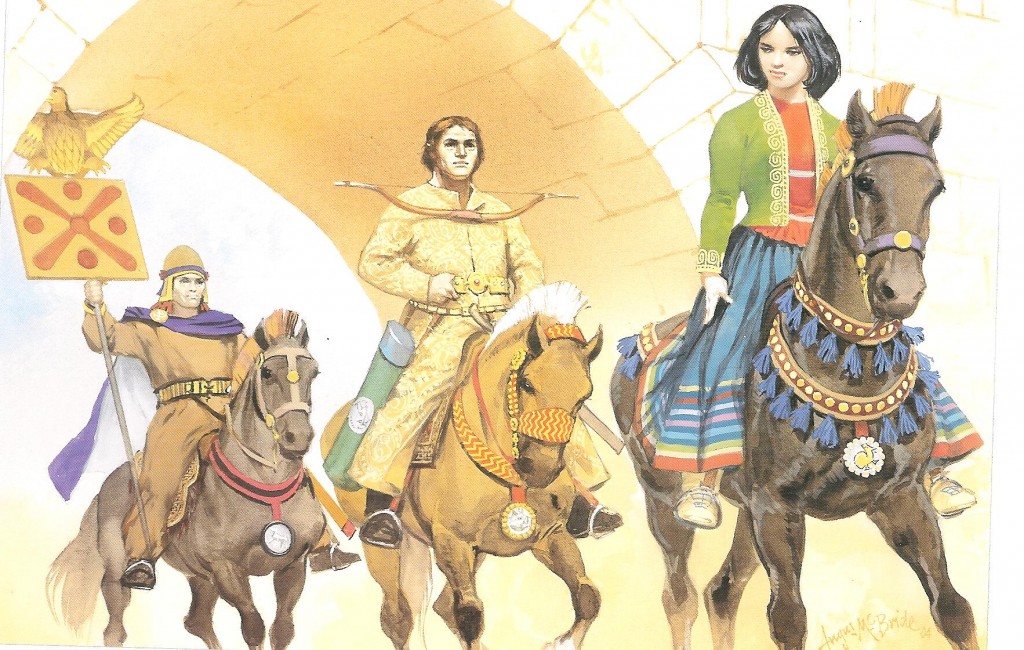 [Click to enlarge] A reconstruction of the late Sassanians at Ādur Gušnasp or Shiz (Takht e Suleiman in Azarbaijan, northwest Iran) by Kaveh Farrokh (painting by the late Angus Mcbride) in Elite Sassanian Cavalry-اسواران ساسانی-. To the left rides a chief Mobed (a top-ranking Zoroastrain priest or Magus), General Shahrbaraz (lit. “Boar of the realm”) is situated in the center and Queen Boran (Poorandokht) leads to the right.
[Click to enlarge] A reconstruction of the late Sassanians at Ādur Gušnasp or Shiz (Takht e Suleiman in Azarbaijan, northwest Iran) by Kaveh Farrokh (painting by the late Angus Mcbride) in Elite Sassanian Cavalry-اسواران ساسانی-. To the left rides a chief Mobed (a top-ranking Zoroastrain priest or Magus), General Shahrbaraz (lit. “Boar of the realm”) is situated in the center and Queen Boran (Poorandokht) leads to the right. 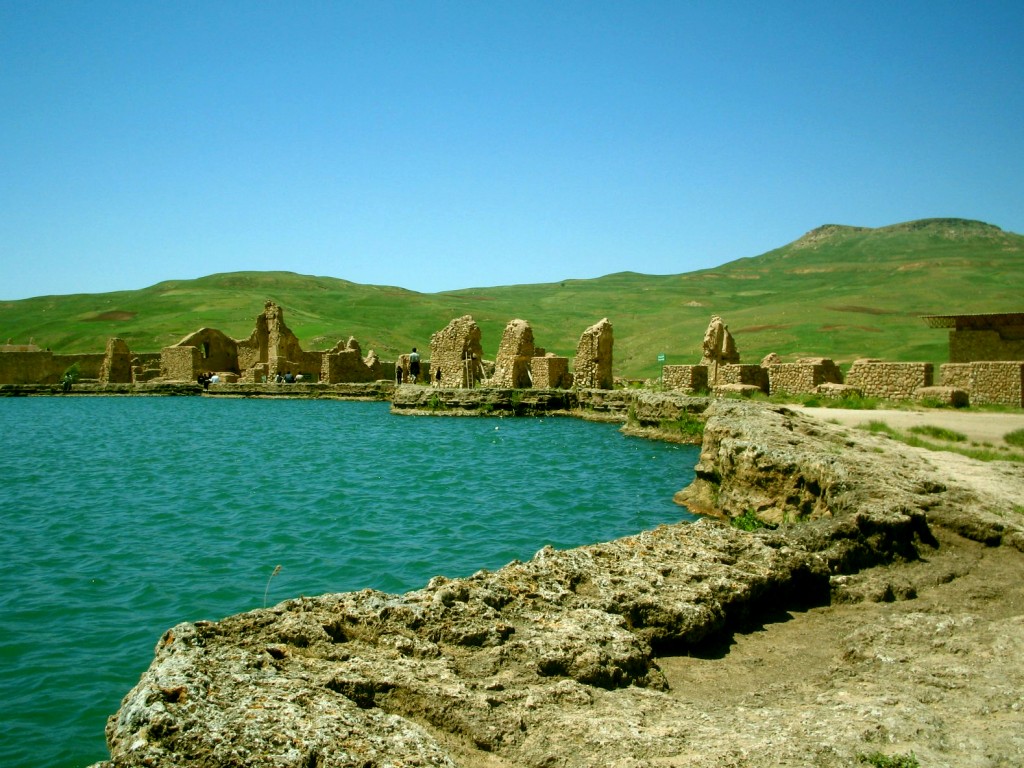 [Click to Enlarge] An excellent view of the edge of the lake at Ādur-Gushnasp (Photo Source: Public Domain).
[Click to Enlarge] An excellent view of the edge of the lake at Ādur-Gushnasp (Photo Source: Public Domain).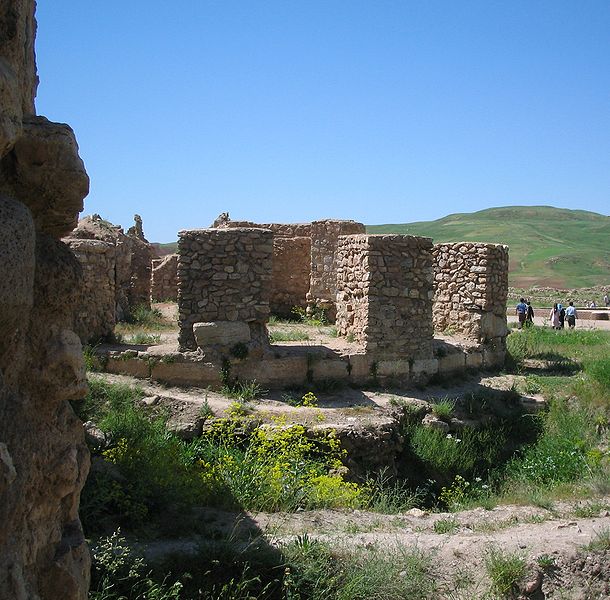 [Click to Enlarge]One of the structures at Takhte Suleiman (Picture Source: World Historia).
[Click to Enlarge]One of the structures at Takhte Suleiman (Picture Source: World Historia).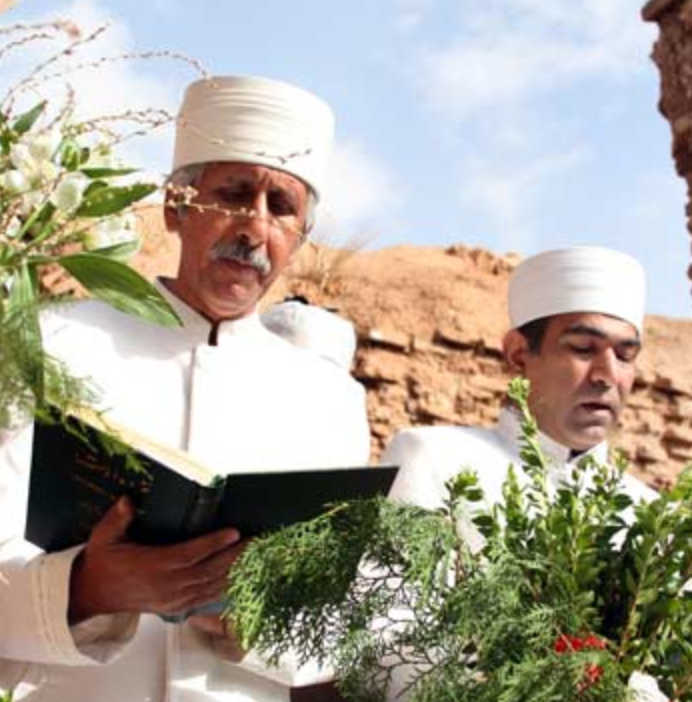
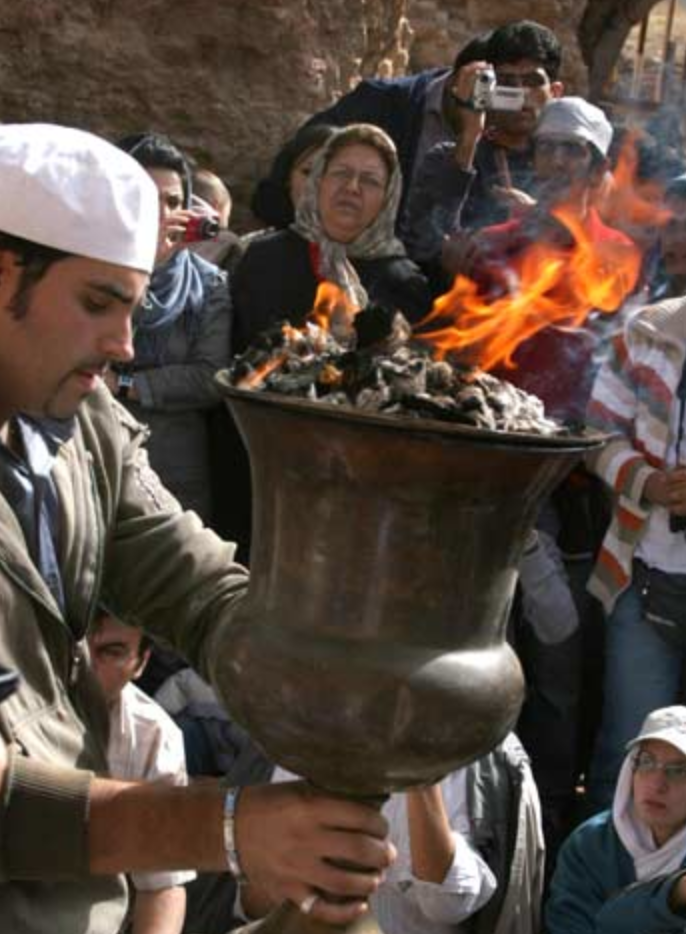 [Click to Enlarge] The Gahanbar ceremony at the Azargoshasb Fire Temple. After the prayers are concluded, a “Damavaz” (a ceremony participants) holds aloft the censer containing fire and incense in his hand to pass around the congregation. As this is done, the Damavaz repeats the Avesta term “Hamazour” (translation: Let us unite in good deeds). Participants first move their hands over the fire and then over their faces: this symbolizes their ambition to unite in good works and the spread of righteousness (Photo Source: Sima Mehrazar).
[Click to Enlarge] The Gahanbar ceremony at the Azargoshasb Fire Temple. After the prayers are concluded, a “Damavaz” (a ceremony participants) holds aloft the censer containing fire and incense in his hand to pass around the congregation. As this is done, the Damavaz repeats the Avesta term “Hamazour” (translation: Let us unite in good deeds). Participants first move their hands over the fire and then over their faces: this symbolizes their ambition to unite in good works and the spread of righteousness (Photo Source: Sima Mehrazar).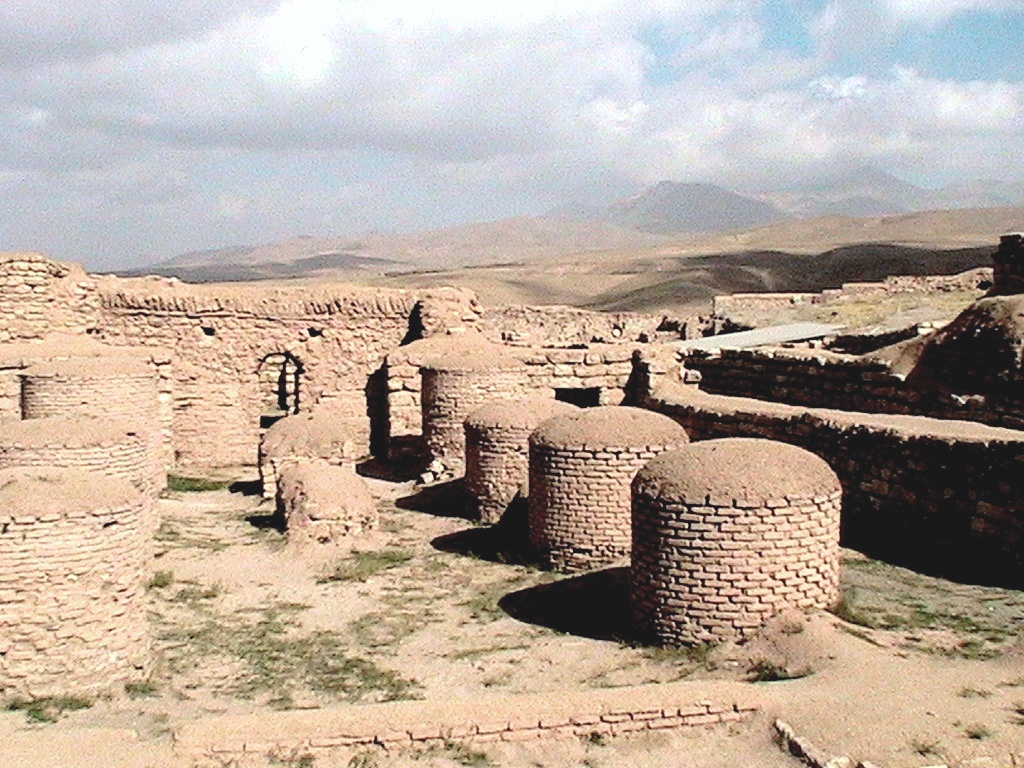 [Click to Enlarge] Round columns at Takhte Suleiman (Photo Source: Novice View).
[Click to Enlarge] Round columns at Takhte Suleiman (Photo Source: Novice View).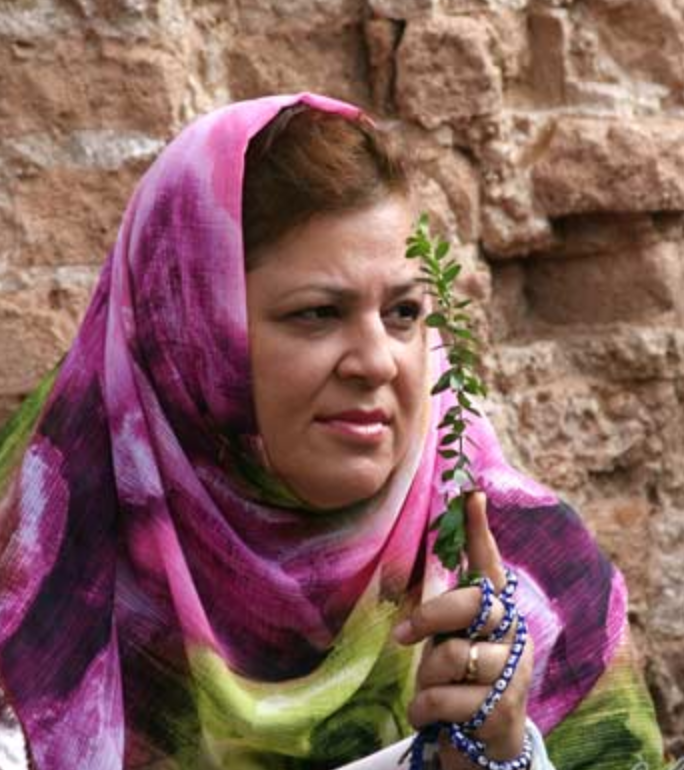 [Click to Enlarge] One of the participants at the Gahanbar ceremony at the Azargoshasb Fire Temple (Photo Source: Sima Mehrazar).
[Click to Enlarge] One of the participants at the Gahanbar ceremony at the Azargoshasb Fire Temple (Photo Source: Sima Mehrazar).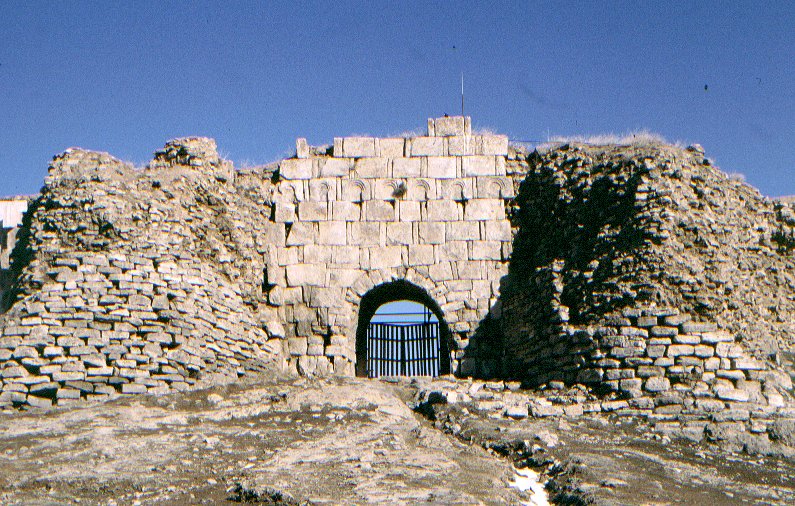 [Click to Enlarge] One of the archways at Ādur-Gushnasp (Picture Source: World Historia).
[Click to Enlarge] One of the archways at Ādur-Gushnasp (Picture Source: World Historia).



